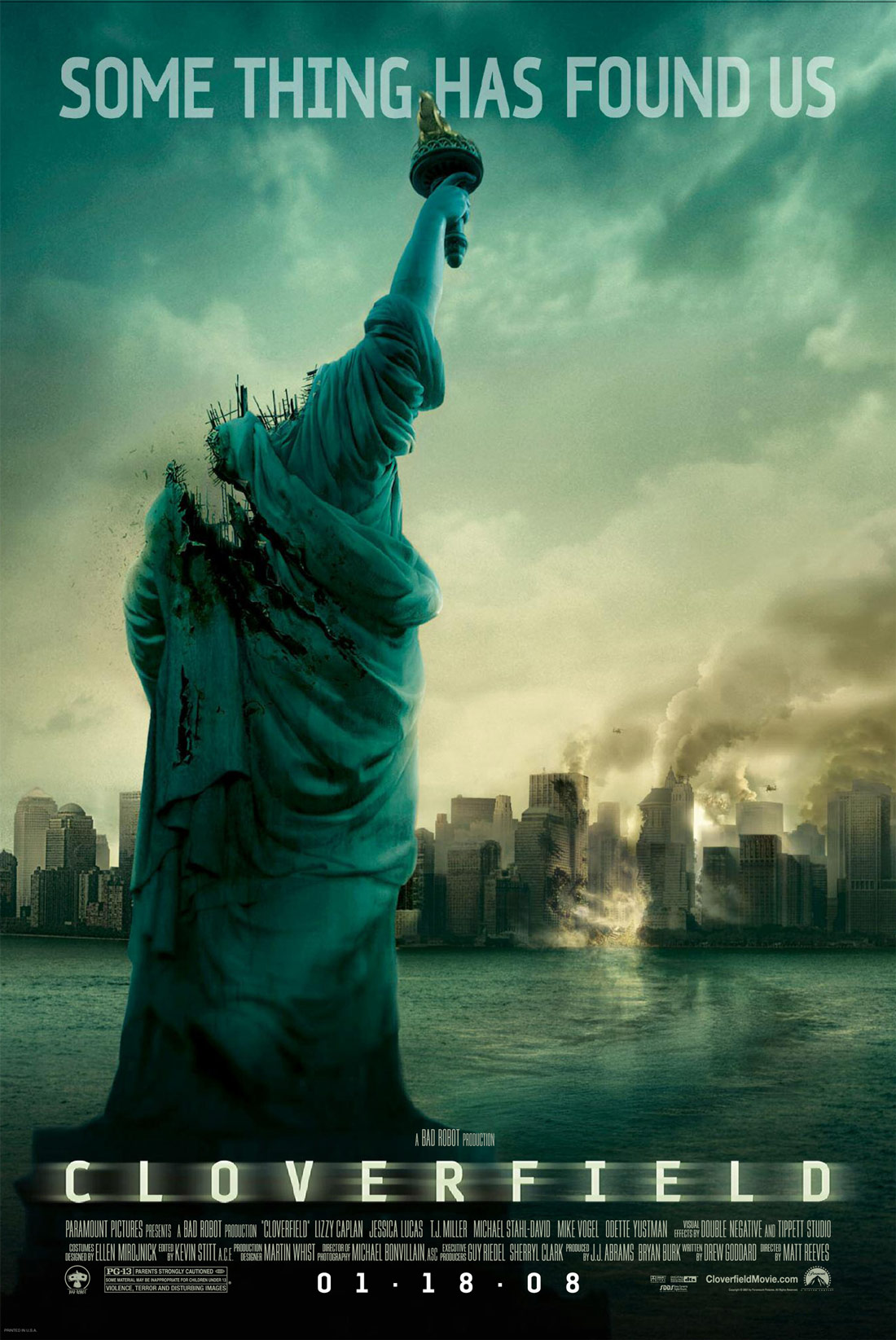
I think it’s time I admit to myself that I’m a non-ironic fan of found footage-style movies. An unsteady frame, organic characters, a decently creepy plot — throw a moderate dose of hysteria in the mix and I’m sold for the entire runtime. Oh, and an obscure or semi-obscure malicious creature helps, too.
Cloverfield fits the bill. It also had all the viral marketing and hype to build it up as the most spectacular monster/disaster/found footage movie ever prior to its release 5 years ago, which simultaneously meant that you set yourself up for a colossal disappointment if you bought into it, so I took my time until I finally decided to watch it, and I’m glad I did. Now that the fuss has long cooled off and there were no outside influences to taint my experience, I could go into it with a more open and neutral mindset than would have been possible in 2008.
There are some questions you just don’t ask when it comes to the genre, like why the characters don’t throw away their silly cameras and run in acutely life-threatening situations. The answer is because then we cinemagoers wouldn’t have the chance to be at the edge of our seats for 85 minutes, that’s why. But what I like about Cloverfield is that there are other, more interesting questions left to be discussed. Little is revealed about the monster, which leaves a lot of room for interpretation — it’s impossible not to notice a parallel to Godzilla, only instead of being an allegory for the damage inflicted on Japan by the atom bomb, the Cloverfield beast is an allegory for the damage the events of 9/11 inflicted on New York. Upon reading the synopsis on IMDB, I found out that in the end scene, when the military finds footage of the main characters on their trip to Coney Island, there is an object falling from the sky and into the ocean in the background. (I find it virtually impossible to see with the naked eye, especially if you don’t actively pay attention.) In interviews, Drew Goddard has stated that contrary to popular belief, the object is not the monster, but a satellite. The monster had been lying dormant in the ocean for thousands of years, and the satellite awakens it from its sleep.
So needless to say, there are myriads of theories by fans to be found on the Internet. I love when a film sparks speculation and debate of this kind. Cloverfield provides just the right amount of answers to prevent fun-spoiling frustration, but leaves enough mystery to stir the audience’s curiosity and investigative spirit.
I’ve heard my fair share of film buffs criticise the use of shaky cam for being a convenient way to hide violence, ill-executed CGI sequences, poor acting and stunt doubles, hindering complete immersion in the story and generally just making scenes hard to watch, but I disagree. To me, the use of shaky cam in movies like Cloverfield is nothing short of a must. When the whole population of New York city is seized with panic and fright, you can bet your bottom dollar that there will be chaos; and what better way to emphasise the terror and havoc visually than by not using a tripod to shoot the movie? When a situation spins out of control to this extent, messy shots make a lot of sense. I really, really dig the cinematography, but there’s a staggering amount of people who couldn’t finish watching Cloverfield because of it, so I suppose it’s a weakness, as well. (Interesting fact: our brain shuts down our vision when we turn our head quickly — this phenomenon, known as “saccadic masking”, is the reason why the use of shaky cam in films makes so many people feel sick.)
Cloverfield is one of the better movies of the genre I’ve yet had the pleasure to encounter. It starts out rather weak by depicting the boring lives of rich New Yorkers, hits its peak when the disaster strikes and stays there for a majority of the film, and unfortunately ends on an underwhelming note, but that doesn’t significantly detract from its overall quality. It’s a thrilling watch that stayed on my mind for a while.
![]()
![]()
![]()